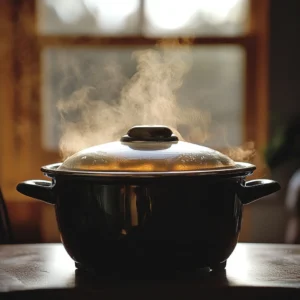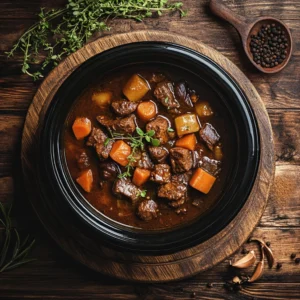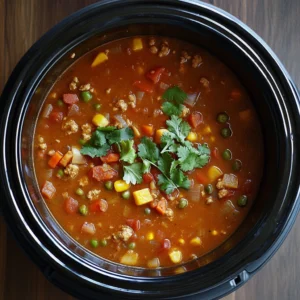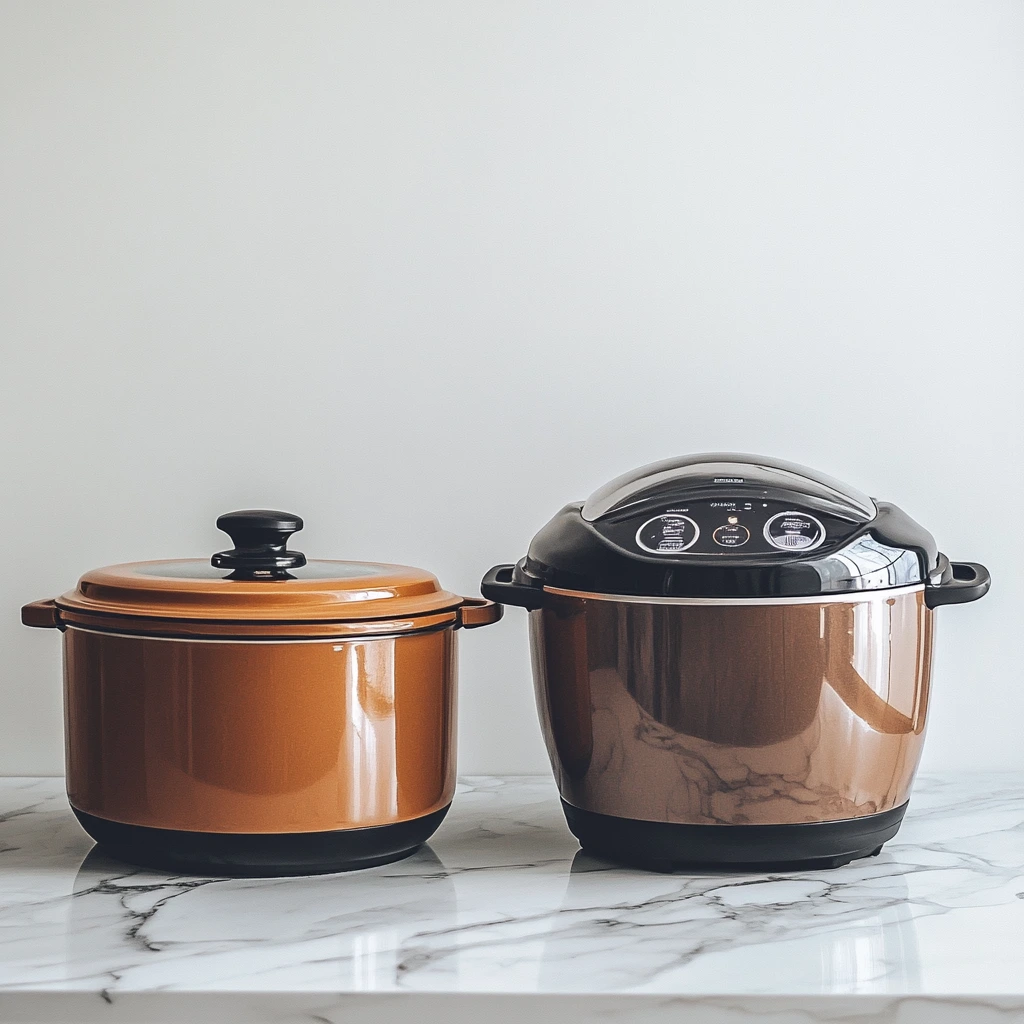Understanding the differences between a slow cooker and a Crockpot is essential for making an informed decision when updating your kitchen appliances.
In this comprehensive article, we delve into their historical backgrounds, technical distinctions, and practical usage tips, all designed to help you decide which appliance best fits your culinary needs. For further insights on appliance performance and expert reviews, visit Consumer Reports Slow Cookers.
Introduction
Slow cookers and Crockpots have earned their places in modern kitchens by offering an effortless way to prepare nutritious and flavorful meals. Their ability to slowly cook food over an extended period not only preserves essential nutrients but also intensifies flavors, making them ideal for busy lifestyles and gourmet cooking alike.
In this article, we provide an in-depth look at these appliances by exploring:
- The origins and evolution of the slow cooker and the rise of the Crockpot brand.
- Detailed technical comparisons covering heating elements, materials, and innovative user interfaces.
- Practical tips on energy efficiency, safety, maintenance, and recipe adaptability.
- An overview of market trends and consumer preferences to help guide your purchasing decision.
- A helpful buying guide for selecting the best appliance to meet your needs.
For a quick start on delicious recipes, check out our collection of easy weeknight crockpot meals that can transform your dinner routine with minimal effort.
Historical Background and Evolution
The evolution of the slow cooker spans several decades and reflects continuous innovation in home appliance technology. Originally designed to simplify meal preparation, the early slow cookers used basic heating elements to cook food slowly, preserving nutrients and intensifying flavors. Over time, these appliances have evolved significantly, both in design and functionality.
Early Development
Inception:
The first slow cookers emerged in the mid-20th century as a solution for busy households that needed to prepare meals with minimal supervision. Their simple design focused on using low heat over a long period, which allowed flavors to develop gradually. This method of cooking revolutionized home kitchens, making it possible to prepare a full meal in one appliance.
Technological Advancements:
Over the decades, improvements in technology have transformed slow cookers. Early models were basic and manually controlled, but modern devices now incorporate advanced insulation, improved heating elements, and digital control systems. These enhancements ensure more consistent temperatures and energy-efficient performance, which result in perfectly cooked meals every time.
The Rise of the Crockpot
Brand Evolution:
The term Crockpot originally began as a brand name for a specific type of slow cooker. Over time, the brand’s reputation for reliability and innovative features made it synonymous with slow cooking technology. The introduction of programmable settings, enhanced safety features, and sleek designs helped propel the Crockpot to market dominance.
Market Impact:
The success of the Crockpot brand has significantly influenced consumer expectations. Today, many people use the terms slow cooker and Crockpot interchangeably, even though Crockpot refers to a particular brand known for its consistent performance and design innovations. The brand’s continuous efforts to integrate modern features—such as digital timers and automatic shut-off—have set a benchmark in the industry.
For a broader comparison with other cooking technologies, you can also check out what is a pressure cooker best for, which contrasts the rapid cooking process of pressure cookers with the gradual method of slow cooking.
Defining the Appliances
What is a Slow Cooker?
A slow cooker is a versatile countertop appliance designed to cook food gradually at low temperatures over several hours. The fundamental principle behind a slow cooker is its ability to allow ingredients to simmer slowly, which helps to blend flavors, tenderize meat, and reduce the need for constant attention. This method is particularly beneficial for preparing soups, stews, roasts, and even certain desserts.
Key features include:
- Low-temperature cooking: The appliance operates at low heat levels, which are ideal for breaking down tough cuts of meat and infusing flavors.
- Energy efficiency: Slow cookers are designed to use minimal energy compared to conventional ovens, making them a cost-effective option.
- Versatility: They can accommodate a wide range of recipes, from hearty stews and savory soups to delicate desserts and casseroles.
- User Benefits:
- Minimal supervision is needed, making it perfect for busy individuals.
- The gradual cooking process enhances flavor development and ensures even cooking throughout the dish.
What is a Crockpot?
While all Crockpots are essentially slow cookers, the term Crockpot specifically refers to a brand that has become emblematic of slow cooking technology. Over time, the Crockpot brand has distinguished itself through advanced features and innovative design enhancements.
Distinctive characteristics include:
- Enhanced User Interfaces:
Modern Crockpots are often equipped with digital displays, programmable timers, and automatic shut-off features. These enhancements simplify cooking management and improve precision. - Design and Durability:
Typically constructed with reinforced materials and easy-to-clean ceramic or stoneware inserts, Crockpots are designed to last. Their aesthetic appeal also makes them a stylish addition to any kitchen. - Brand Recognition:
The Crockpot name is widely recognized and trusted for its reliability. Many consumers prefer Crockpot models due to their consistent performance and user-friendly features.
For those interested in exploring other efficient cooking appliances, check out our selection of instant pot recipes for weight loss, which highlights another popular and energy-efficient option.
Technical and Functional Differences
Choosing between a slow cooker and a Crockpot often comes down to a comparison of their technical specifications and functional features. Here, we explore these differences in detail.
Heating Elements and Temperature Control

- Standard Heating Elements:
Most slow cookers use a conventional heating element that provides consistent warmth throughout the cooking pot. This even distribution of heat is crucial for ensuring that food cooks uniformly, preventing hotspots that might otherwise burn ingredients. - Temperature Settings:
- Many slow cookers offer multiple temperature settings, typically low, medium, and high. These settings allow users to adjust the cooking process based on the type of food being prepared.
- Some modern units incorporate digital controls, enabling precise temperature adjustments and timing. This level of control can be particularly useful for recipes that require exact cooking times and temperatures.
- Advanced Heating in Crockpots:
Crockpot models often feature enhanced heating systems that include programmable temperature regulation. These systems allow for more precise control over the cooking process. Features such as automatic shut-off and delayed start timers are common in high-end models, providing added convenience and safety during extended cooking sessions.
Materials and Construction
- Build Quality:
Slow cookers are generally designed with ceramic or stoneware inserts that excel at retaining and evenly distributing heat. These materials also contribute to the appliance’s overall durability and ease of cleaning. Crockpots, while similar in function, are often constructed with additional reinforcements and modern design elements that improve their longevity. Many Crockpot models are engineered to withstand daily use while maintaining consistent performance. - User Interface and Controls:
Both slow cookers and Crockpots have evolved to include user-friendly interfaces. However, Crockpot models are frequently lauded for their modern, intuitive designs that simplify the cooking process. Features such as digital timers, preset cooking programs, and touch-sensitive controls set advanced models apart, allowing for a more precise and efficient cooking experience. - Safety Features:
Modern slow cookers and Crockpots are equipped with a variety of safety features, including automatic shut-off functions, cool-touch exteriors, and locking lids. These features help prevent accidents and ensure that the appliance operates safely over long cooking periods. Precise temperature control not only improves cooking performance but also enhances safety by reducing the risk of overheating and potential fire hazards.
Practical Usage and Cooking Performance
Beyond technical specifications, the real value of these appliances is seen in their practical usage and cooking performance.
Cooking Techniques and Recipe Adaptability

-
Versatility in the Kitchen:
Slow cookers and Crockpots are celebrated for their versatility. They are excellent for preparing a wide variety of dishes, including:- Hearty Stews and Soups:
Slow cooking allows flavors to meld and ingredients to tenderize, resulting in rich, deeply flavored stews and soups. - Tender Roasts and Braises:
The prolonged cooking time is ideal for breaking down tough cuts of meat, producing tender and succulent roasts. - Delicate Desserts:
Some recipes, like puddings or fruit cobblers, benefit from the slow and steady heat, which helps maintain texture and flavor. - Casseroles and One-Pot Meals:
The convenience of combining all ingredients in a single appliance makes slow cookers a go-to option for busy families.
- Hearty Stews and Soups:
-
Adapting Recipes for Slow Cooking:
When converting traditional recipes for use in a slow cooker or Crockpot, adjustments may be required, especially concerning liquid ratios and cooking times. For example, recipes that are typically baked in an oven might require less liquid since very little evaporates during slow cooking. Many cookbooks and online resources offer guidance on how to successfully adapt recipes to the slow cooker format. Experimenting with different settings and timings can yield delightful, personalized results.
For a deeper dive into slow cooker recipes and techniques, check out this in-depth article on The Kitchn’s slow cooker collection, which provides practical tips and creative ideas for home cooks.
Energy Consumption and Efficiency
- Energy Savings:
One of the significant advantages of slow cookers and Crockpots is their low energy consumption. Operating at low temperatures for extended periods, these appliances use significantly less energy compared to conventional ovens. - Cost-Effective Cooking:
The efficient use of energy not only reduces utility bills but also contributes to a more sustainable cooking practice. For those who are environmentally conscious, this energy efficiency is a key selling point. - Long Cooking Cycles:
The ability to cook meals over several hours means that slow cookers can be left unattended, freeing up your time while still delivering a hot, ready-to-eat meal at the end of the day.
Safety and Maintenance Considerations
- Enhanced Safety Features:
Modern models incorporate multiple safety mechanisms such as auto shut-off, cool-touch exteriors, and lockable lids. These features ensure that the appliance can be used safely even in busy households. - Maintenance and Cleaning:
Regular cleaning of the cooking vessel, control panels, and exterior surfaces is essential. Always follow the manufacturer’s instructions to ensure optimal performance and extend the appliance’s lifespan. Non-abrasive cleaning tools are recommended to avoid scratching or damaging the ceramic or stoneware inserts. Periodic inspection of electrical cords and control mechanisms is advisable to ensure continued safe operation. - User Tips for Longevity:
To maximize the lifespan of your slow cooker or Crockpot, consider investing in a cover or storing it properly when not in use. Following a routine cleaning and maintenance schedule will help keep your appliance running smoothly for years.
Market Trends and Consumer Preferences
The popularity of slow cookers and Crockpots has only grown over time, influenced by evolving consumer preferences and market trends.
Trends in Modern Kitchens
- Convenience and Versatility:
The convenience of preparing a full meal in a single appliance has driven the widespread adoption of slow cookers and Crockpots in modern kitchens. As lifestyles become increasingly hectic, appliances that require minimal supervision and offer hands-off cooking have become highly desirable. - Smart Technology Integration:
Newer models often incorporate smart technology, including Wi-Fi connectivity and app-based controls. This allows users to monitor and adjust cooking settings remotely, adding an extra layer of convenience for tech-savvy consumers. - Sustainable Cooking:
With growing awareness about energy consumption and environmental sustainability, the low energy usage of slow cookers has become a major selling point. Consumers are increasingly seeking appliances that help reduce their carbon footprint.
Consumer Feedback and Reviews
- User Experiences:
Customer reviews often highlight the consistent performance, ease of use, and durability of slow cookers and Crockpots. Many users appreciate the hands-off cooking method that allows them to prepare meals without constant attention. - Areas for Improvement:
Some feedback indicates that not all models are created equal—certain units may have issues with temperature consistency or may be more challenging to clean. However, these issues are often addressed in higher-end models that offer advanced features. - Brand Loyalty:
The strong brand recognition of Crockpot continues to play a significant role in consumer preferences. Many shoppers opt for the Crockpot brand due to its long-standing reputation for reliability.
Buying Guide and Considerations
When choosing between a slow cooker and a Crockpot, several factors should be taken into account to ensure you select the best appliance for your needs.
Factors to Consider
- Size and Capacity:
Consider the size of your household and the typical portions you prepare. Slow cookers come in various sizes, so choose one that fits your cooking needs without taking up unnecessary counter space. - Features and Controls:
Evaluate the available features such as programmable timers, digital controls, and safety mechanisms. Advanced models may offer more precise temperature settings and convenience features like delayed start timers. Decide whether you prefer a simple, straightforward appliance or one with advanced digital functionalities. - Budget:
Slow cookers and Crockpots are available across a wide price range. Determine your budget and compare models within that range to find the best value for your money. - Ease of Cleaning:
Look for appliances with removable, dishwasher-safe inserts that simplify the cleaning process. This is particularly important for busy households. - Design and Aesthetics:
Consider the design of the appliance and whether it complements your kitchen decor. While functionality is paramount, a stylish appliance can enhance the overall look of your kitchen.
Recommended Models and Brands
- Crockpot:
As a leading brand, Crockpot offers several models with advanced features. Their products are known for their durability and user-friendly interfaces. - Alternative Brands:
There are many reputable brands on the market that offer slow cookers with comparable features. Reading consumer reviews and expert opinions, such as those available on Consumer Reports Slow Cookers, can help you make an informed decision.
For more detailed guidance on selecting kitchen appliances, consider exploring our instant pot recipes for weight loss section, which often includes tips on appliance selection as well.
Recipes and Creative Uses

Beyond their technical advantages, slow cookers and Crockpots open up a world of culinary creativity. Here are some ideas and tips for making the most of your appliance:
Hearty and Comforting Dishes
- Stews and Soups:
Slow cooking is perfect for preparing rich, flavorful stews and soups. The long cooking time allows meat and vegetables to release their natural juices, creating a deeply satisfying meal. - Roasts and Braises:
For tender, melt-in-your-mouth roasts, the slow cooker breaks down tough cuts of meat, resulting in a dish that is both hearty and flavorful.
Creative Desserts
- Fruit Cobblers and Puddings:
Yes, you can even make desserts in your slow cooker! Try preparing a warm fruit cobbler or a creamy pudding—there are many recipes available online that guide you through adapting traditional dessert recipes for slow cooking. - Cakes and Breads:
Some innovative recipes take advantage of the slow cooker’s gentle heat to bake cakes and breads, offering a unique alternative to conventional ovens.
International Cuisines
- Curries and Tagines:
The slow cooker is excellent for international dishes that benefit from prolonged cooking times, such as curries or North African tagines. These recipes often call for a blend of spices that develop more complexity when cooked slowly. - Stews from Around the World:
Explore recipes from various cultures that have their own versions of slow-cooked stews, each bringing unique flavors and techniques to the table.
For additional recipe inspiration and creative ideas, visit The Kitchn’s Slow Cooker Collection for a variety of tested recipes and cooking tips.
Conclusion
In summary, the differences between a slow cooker and a Crockpot extend well beyond simple branding. The key distinctions lie in design innovations, technical features, and the overall user experience. Both appliances offer a convenient, energy-efficient way to prepare delicious meals with minimal effort, but the choice between them ultimately depends on your individual cooking style and preferences.
By considering factors such as technical specifications, build quality, energy efficiency, and your personal cooking needs, you can confidently choose the appliance that best suits your lifestyle. Whether you prioritize advanced digital features and enhanced safety mechanisms or prefer a time-tested, reliable tool, both slow cookers and Crockpots can elevate your culinary game.
For those looking to dive deeper into the world of slow cooking, our additional internal resources, like our guide on what is a pressure cooker best for, offer even more insights and practical tips.

